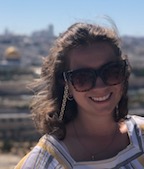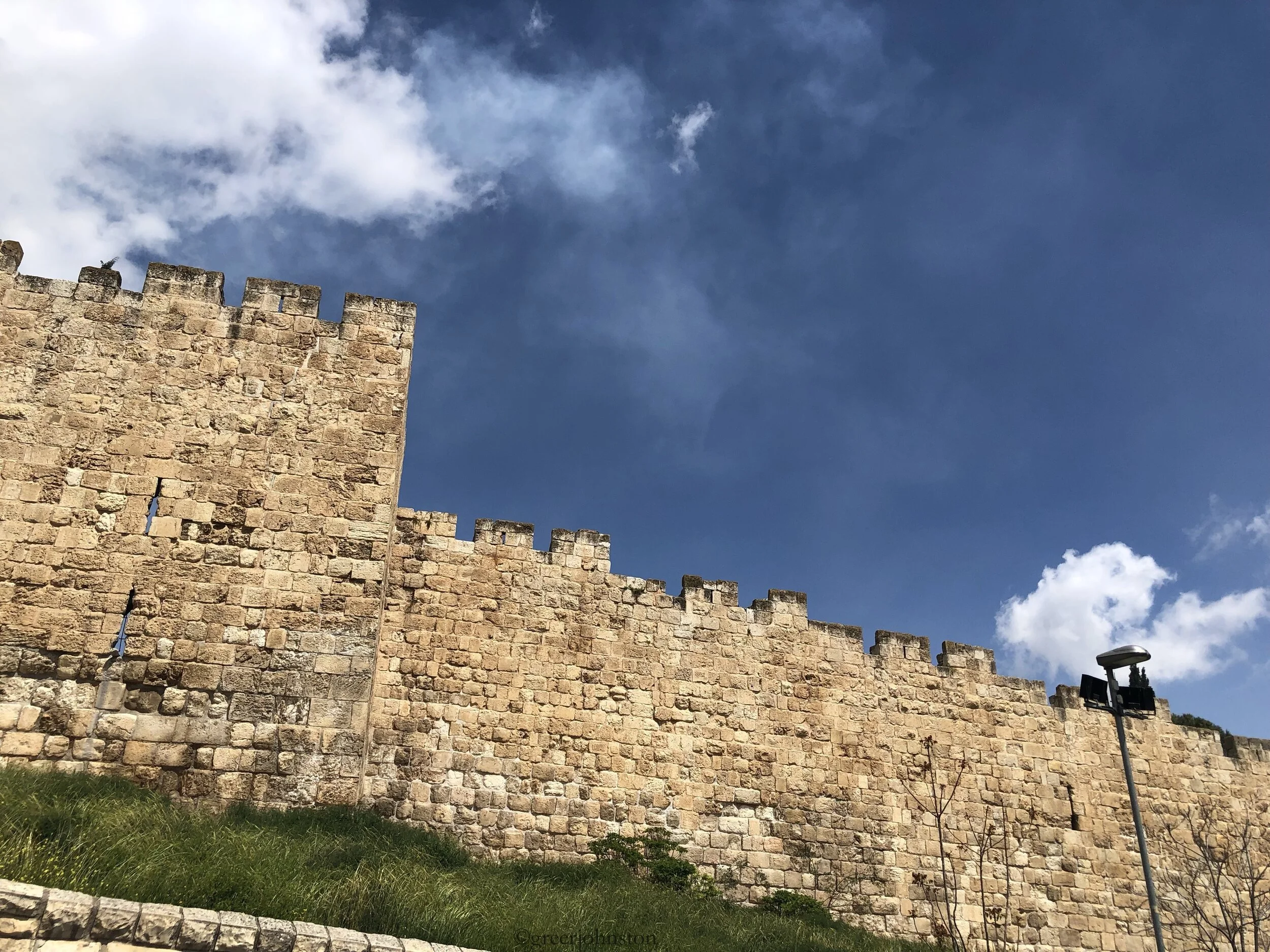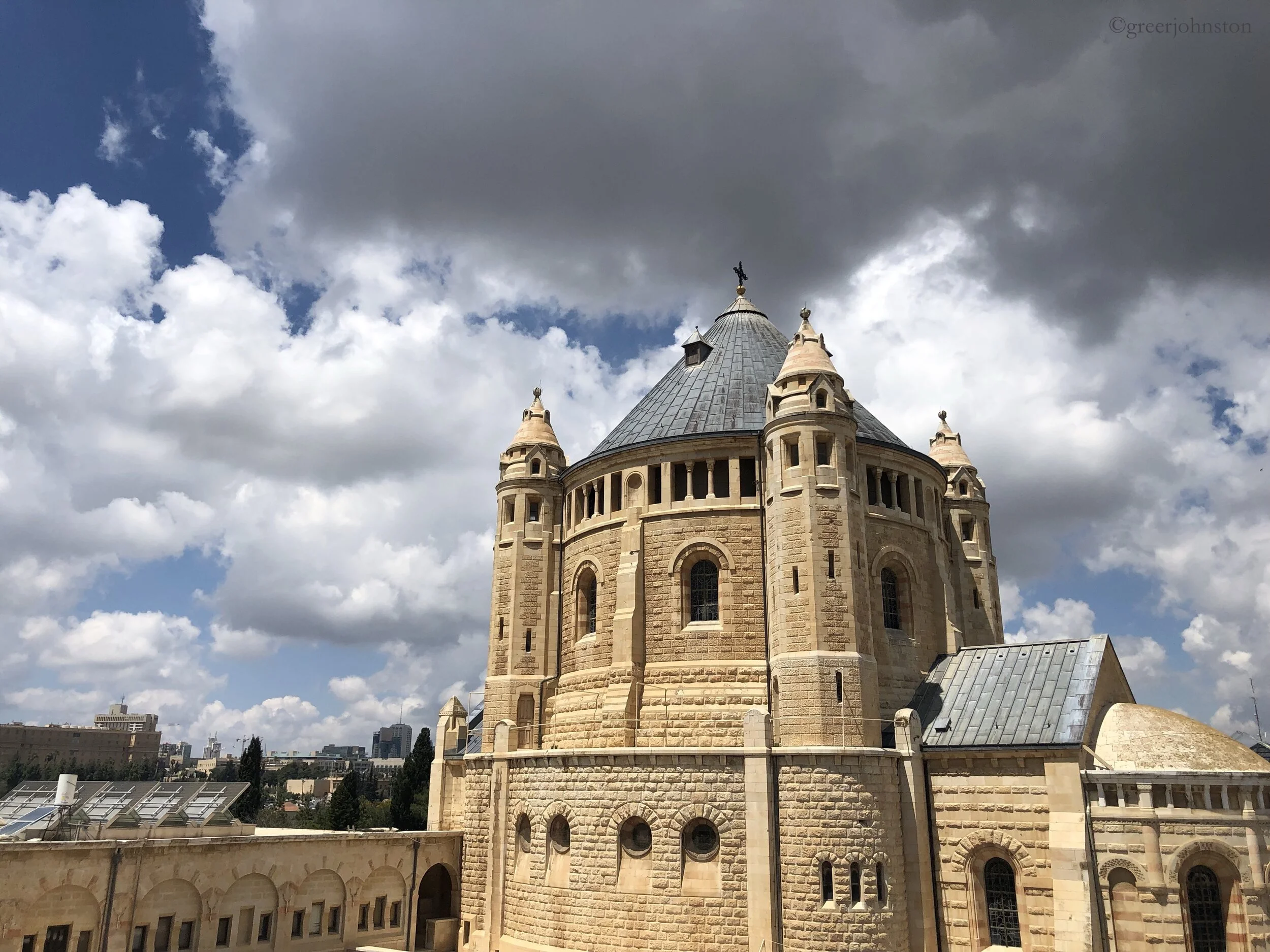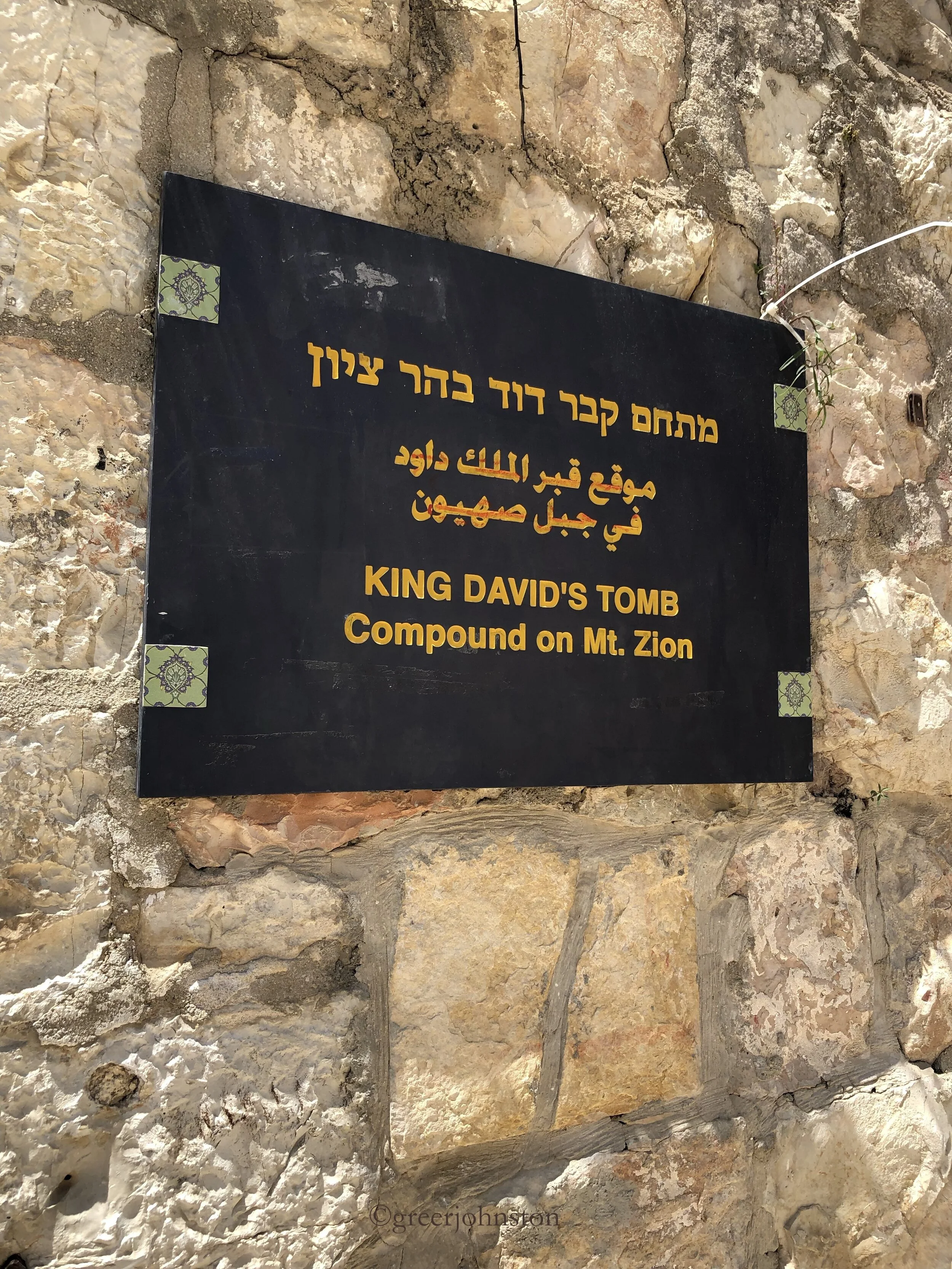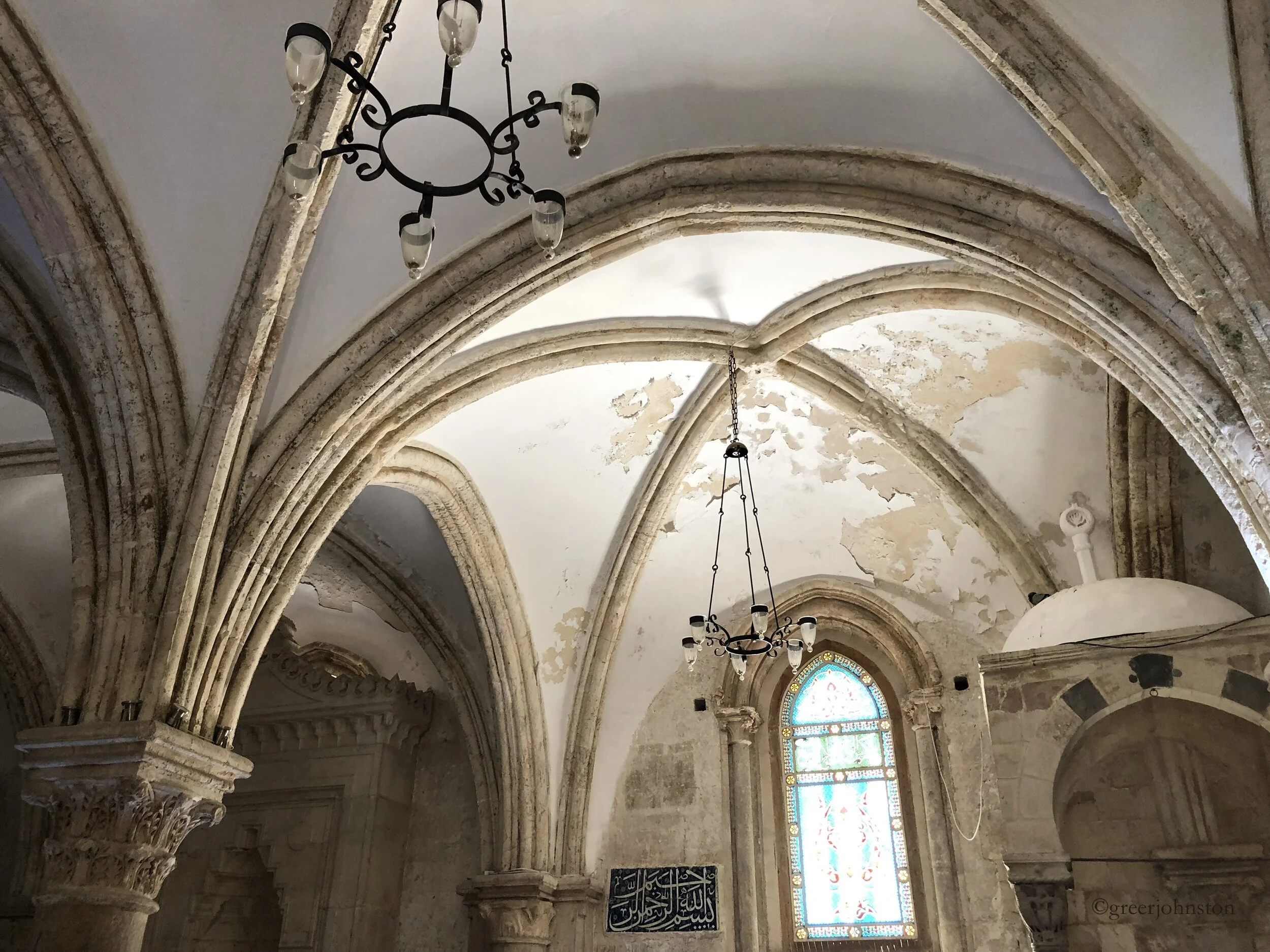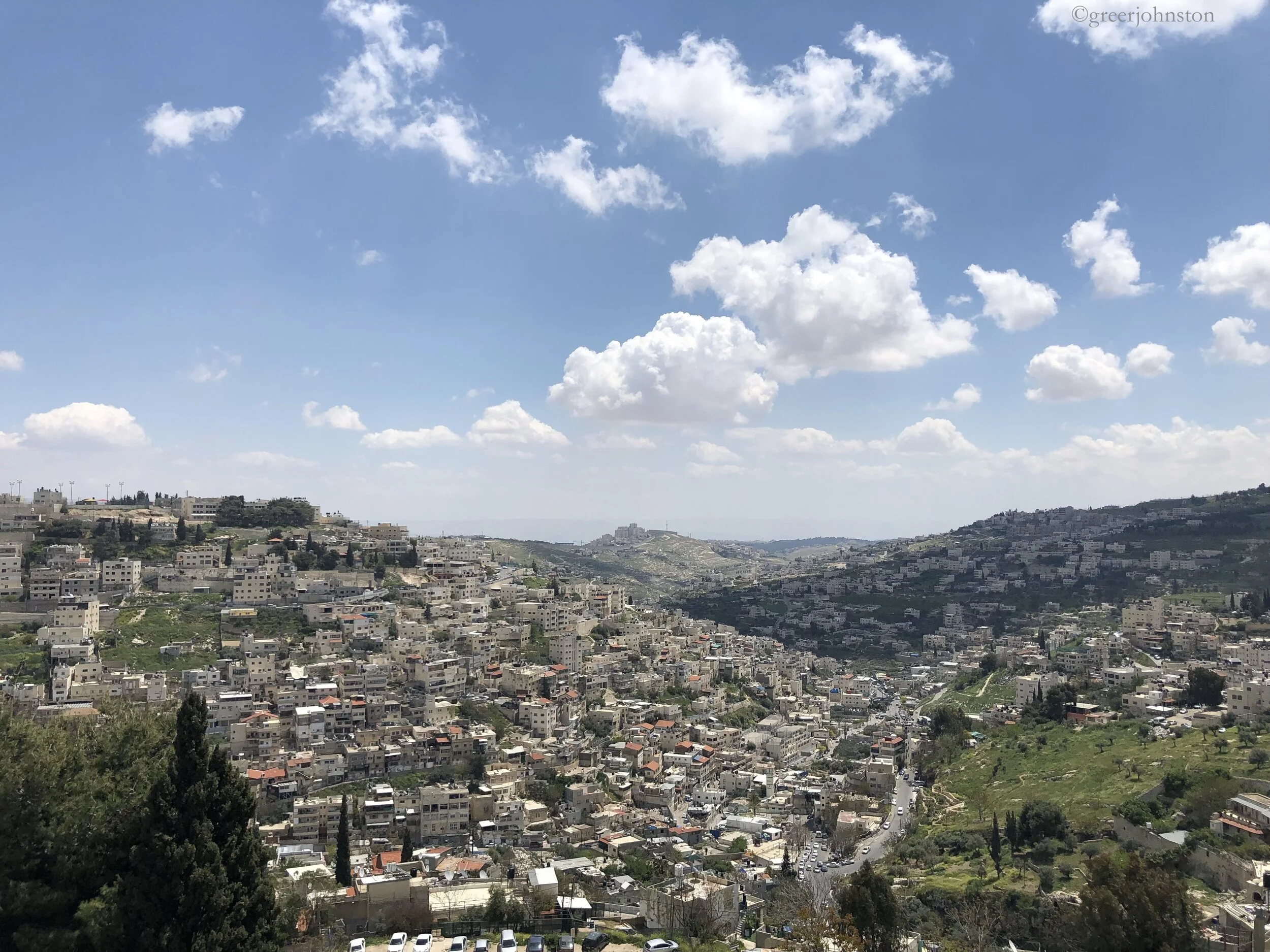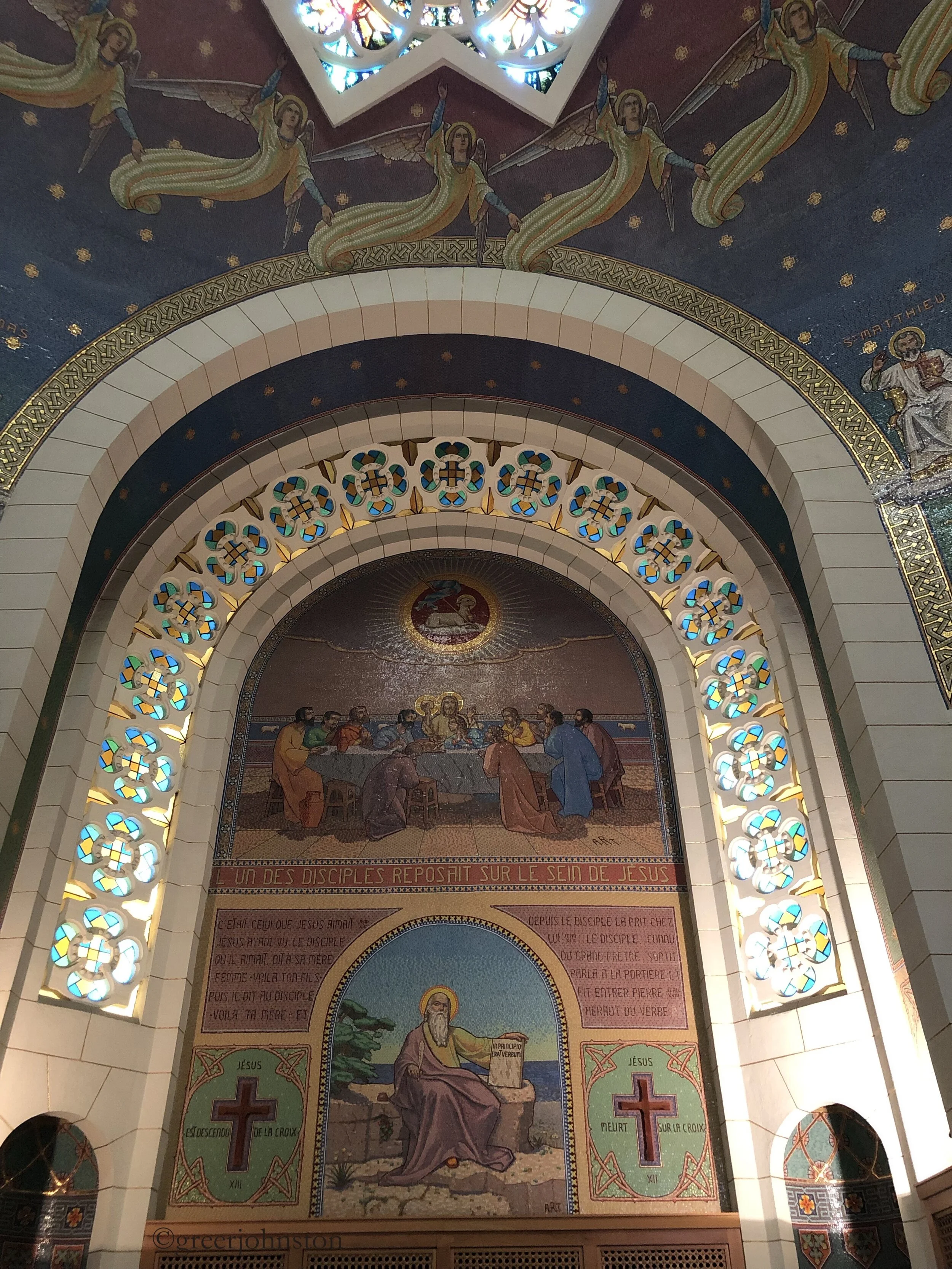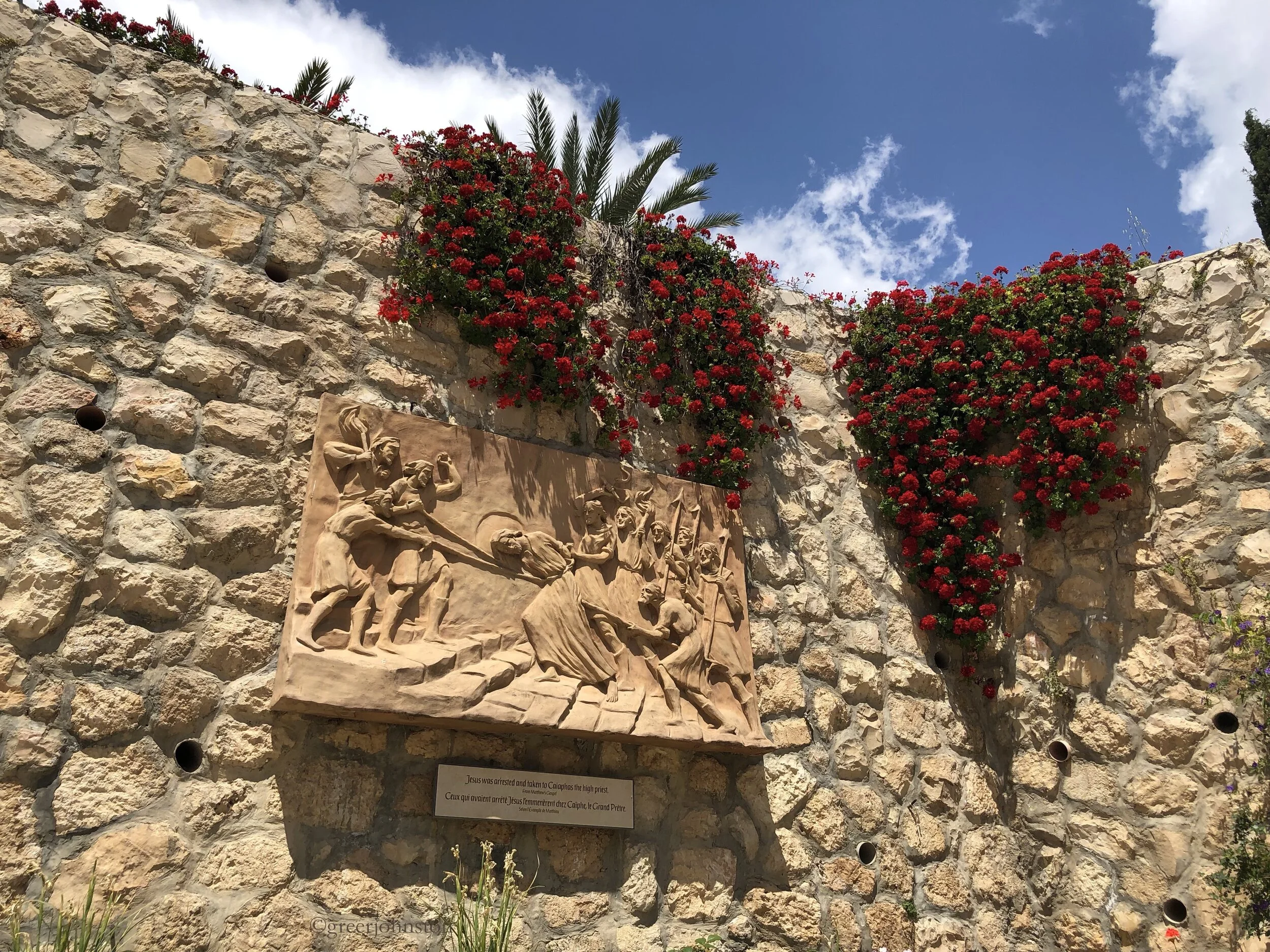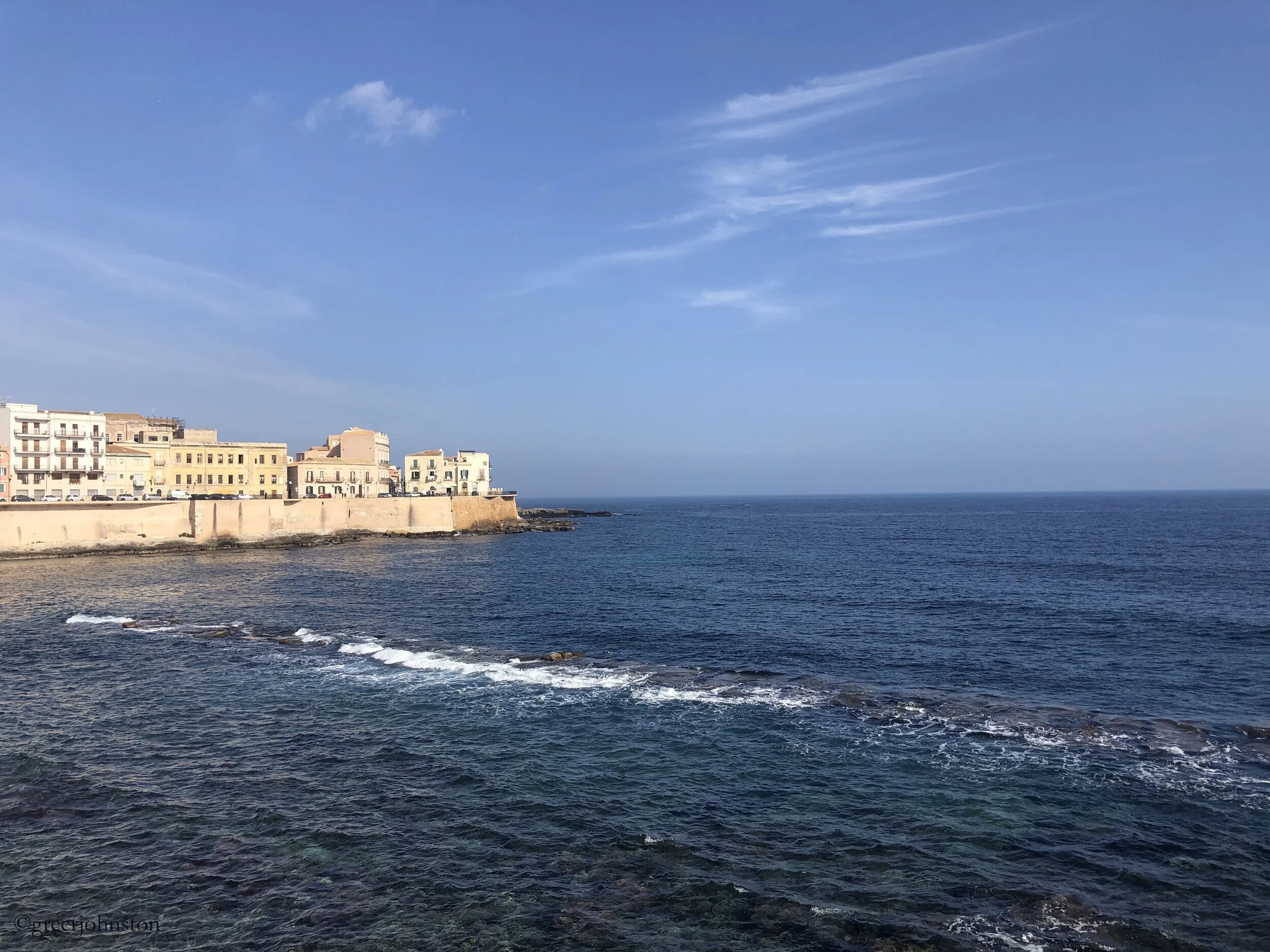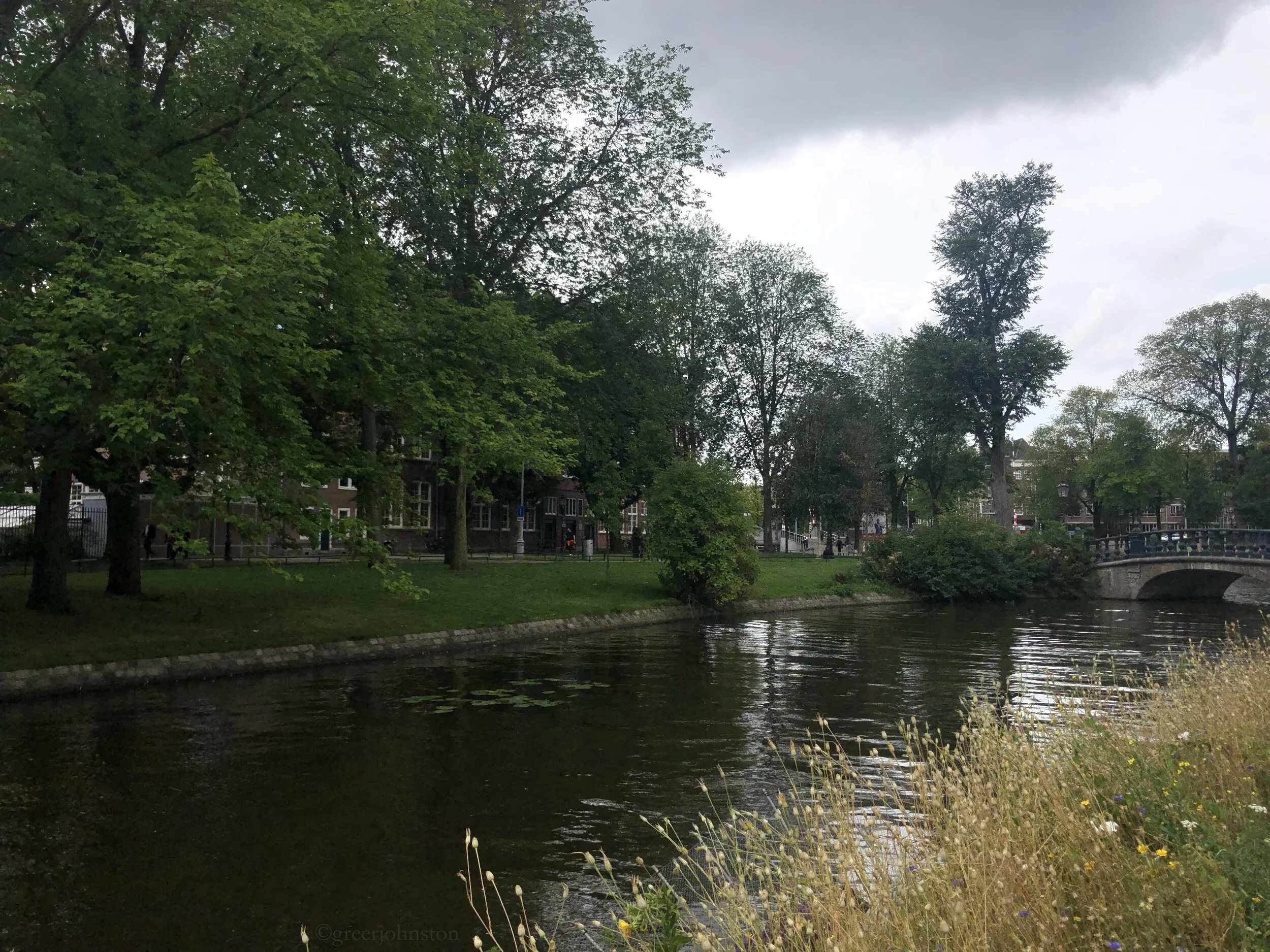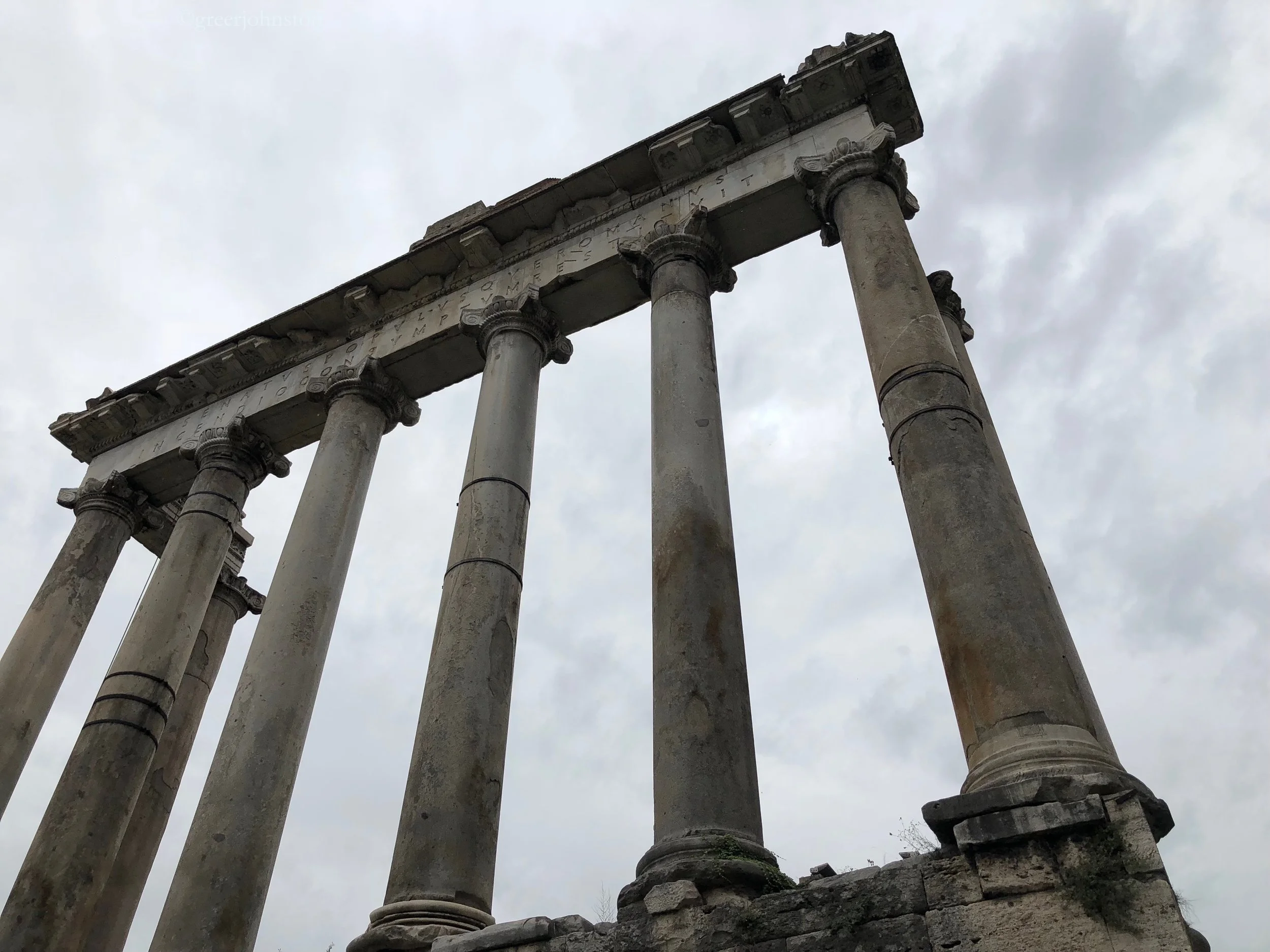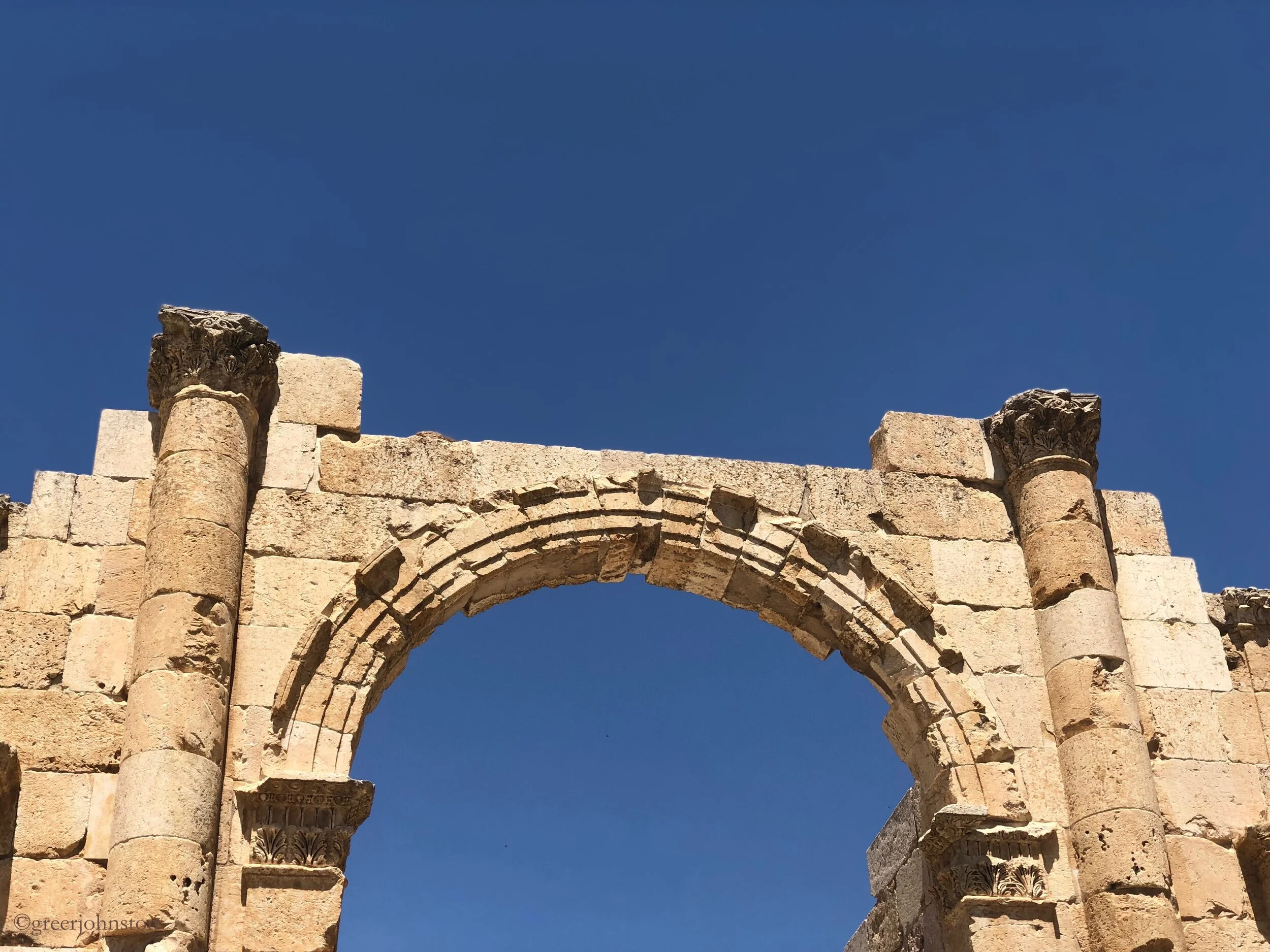Jerusalem - Mount Zion
When you arrive in Jerusalem, what you may not expect is that it is a city of old and new. Sometimes these distinctions are blurred and blend into one another, as the whole city is built of only one type of limestone, Jerusalem Stone. Yet, sometimes they are very clear. It will be most obvious when you first catch sight of the walled Old City. The asphalt turns to ancient stone, and as you walk through one of eight gates, the omnipresent portals of which some still have doors, you walk back in time.
Outside the southwest corner of the Old City wall rises Mount Zion, one of the seven hills of Jerusalem. It can be easy to make an afternoon of exploring the sights here. I, however, only discovered I was walking up (yes, up) this significant “mount” when I was strolling around below and saw something peaking out of the trees in the hill above that looked interesting. On what was a lovely spring day, I made the most of having already arrived there by chance, and tried to see as much as I could. For the sake of ease and comfort, I will instead guide you around Mount Zion in the way that, in retrospect, is much more convenient, and much less sweaty.
The exterior of Dormition Abbey
The most obvious place to begin then is Zion Gate. Exiting the Old City, you will already feel a change in pace in the short, quiet walk to Dormition Abbey. Walking around Mt. Zion can be a bit confusing. The entrance to the abbey is located on Har Tsiyon Street. (If you are using Google Maps, you can search for Cafeteria Dormition Abbey to find it easier. In general, I would also recommend downloading alternative apps, like maps.me and Moovit, which are more inclusive of locations in this region. And yes, there is a cafeteria there.) This church is built at the place where it is believed Mary, the mother of Jesus, fell asleep or passed away, depending on your tradition. It is free to stop in and take a look around at the beautiful mosaics inside. (Note: there is also a crypt with a statue of Mary that may be interesting to you, although at the time I did not realize there was a downstairs.)
The entrance to King David’s Tomb. Like most signs in Jerusalem, it is written in (from top to bottom): Hebrew, Arabic, and English
After leaving the abbey, you can head to the compound of King David’s Tomb. The best way would be to head back the way you came along Har Tsiyon Street, then turn at the corner near the Franciscan Monastery. There you can walk down Ma’ale Shazkh Street to the entrance of the complex. Just follow the signs, and the crowds, as every tourist you see will be walking between the two places. Again free to enter, this is a small room with a stone sarcophagus, generally regarded as the Tomb of King David. Visiting is separated by a partition for women and men. This is a small site. When I visited it was not crowded, but I imagine it could be.
In the same compound is located the Cenacle, or the Upper Room. It is here where the Last Supper is said to have occurred. As with many sites in Jerusalem, throughout the centuries these places have been used differently depending on who was in charge. During the Ottoman period, this building was used as a mosque, and stained glass with Arabic calligraphy and the mihrab, the niche that denotes the direction of Mecca, still remain. After passing through the Cenacle, you can head to the rooftop to take in a view of the compound.
Inside, the Cenacle appears much like a former mosque would, with Arabic calligraphy and the mihrab in the lower-left hand corner of the photo
And finally, to the site that started it all. Likely it is the least well-known, but to me at least, it was the most interesting: the Church of St. Peter in Gallicantu. Again, don’t listen to Google Maps. Just walk down Ma’ale Shazkh Street from the main entrance of King David’s Tomb, carefully cross and (briefly! briefly! not as Google shows) walk down the main street Ma’ale HaShalom until you first see Malki Tsedek Street, and you will be at the entrance to St. Peter’s. When walking along the city walls, I had seen its blue domes poking out from the trees beyond. I decided that I needed to know what this place was. And after climbing the hill overlooking the neighborhood of Silwan, I arrived, and was blown away. Inside this church, which interestingly is open every day except Sunday, are some of the most beautiful, though contemporary, mosaics I’ve seen.
Looking over Silwan from the viewpoint of St. Peter in Gallicantu
This site is complex, with leveled gardens, excavated ruins, and a stunning viewpoint outside. Inside, there is the interior of the church itself, as well as underground caves that today serve as a place of memory of “the sufferings of Jesus during his Passion, regardless of where they took place, as well as by the Apostles, the first believers in his name,” (church signage). You will see the symbol of the rooster all around, as here it is said that Peter’s denial occurred, famously predicted by Jesus: “I tell you, Peter, before the cock crows this day, you will deny three times that you know me,” (Luke 22:34, USCCB).
Stunning modern mosaics inside St. Peter in Gallicantu
This site did have a small entrance fee, but I personally spent more than an hour there and found it worthwhile. Should you not want to head back toward Zion Gate, you could walk down the hill along Malki Tsedek Street to re-enter the Old City at Dung Gate.
While I was able to see many things and take my time, my Mount Zion adventure only lasted a little over two hours. As with all of these sites, it is more about a personal experience and your relationship to these places. If you go at a quiet time, you may be able to have more of a profound experience than if there is a large tour group there as well, especially in the smaller sites.
Something that is also worth noting: these sites are considered holy and sacred by many. Out of respect, and sometimes out of obligation in order to enter, it is necessary to dress modestly. This is not uncommon for many attractions, as well as just walking around some conservative neighborhoods in Jerusalem. To avoid any uncomfortable situations, I would recommend dressing modestly if you plan on doing pretty much any sight-seeing in Jerusalem.
Flowers and scenes from the Gospel in the garden of St. Peter in Gallicantu
Mount Zion is a place steeped in the imaginations of many. And here it is real. It is not far-away myth but just footsteps from an incredibly densely-populated walled city. What you get of visiting Mount Zion depends much on you, but I hope this guide can share some insight in how to visit in a convenient and hassle-free way.
Note: The header image is of the wall of the Old City along Malki Tsedek Street.
